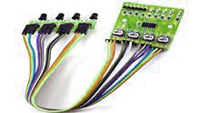Can Mass Air Flow Sensor Affect Traction Control? Exploring the Effects!
In this exploration of “Can Mass Air Flow Sensor Affect Traction Control,” we delve into your complex interplay between these two critical components of modern vehicles. Our guide begins by unraveling your link between your MAF sensor’s role in measuring your air intake and how its malfunction can indirectly trigger traction control issues. We’ll provide a clear understanding of your MAF sensor’s function in vehicle performance, outline your symptoms of its failure, and guide you through diagnosing its impact on traction control systems. Additionally, we offer you practical steps to fix your faulty MAF sensor, thereby restoring full functionality to your vehicle’s traction control.
Can Mass Air Flow Sensor Affect Traction Control: Unveiling the Link
The question of whether your Mass Air Flow (MAF) sensor can affect your traction control might seem complex, but it highlights your interconnected nature of your modern vehicle systems.
The MAF sensor, while primarily associated with your engine performance, can indeed have a cascading effect on your traction control, an essential safety feature.
- Understanding your MAF Sensor’s Role: Your MAF sensor plays a critical role in your vehicle’s engine management system. It measures your volume and density of air entering your engine and sends this data to your Engine Control Unit (ECU). The ECU then adjusts your fuel injection rate to maintain an optimal air-fuel mixture, which is crucial for your efficient engine performance.
- Link to Traction Control: Traction control systems rely on your accurate input from various sensors, including your MAF sensor, to function correctly. If your MAF sensor provides erroneous data, it can lead you to irregular engine behavior, such as sudden power loss or uneven acceleration. This erratic engine performance can inadvertently trigger your traction control system, as it may interpret your inconsistencies as wheel slip or loss of traction.
- Indirect Impact on Traction Control: Furthermore, your faulty MAF sensor can cause your engine to run lean (too much air in your air-fuel mixture) or rich (too much fuel in your mixture). These conditions can lead you to reduced engine power or misfiring, affecting your overall stability and control of your vehicle, thereby indirectly impacting your traction control system’s effectiveness.
While your MAF sensor does not directly control your traction, its influence on your engine performance can have secondary effects on your traction control system. Ensuring that your MAF sensor is functioning correctly is vital for your optimal operation of both your engine and traction control systems.
Understanding the Role of the Mass Air Flow Sensor in Vehicle Performance
The Mass Air Flow (MAF) sensor is your critical component in modern vehicles, significantly influencing your engine performance and efficiency. Its primary role is to measure the amount of air entering your engine, a vital parameter for your optimal engine operation.
- How your MAF Sensor Works: The MAF sensor, located between your air filter and your engine’s intake manifold, measures your volume and density of air entering your engine. It converts this airflow into a voltage signal that is sent to your Engine Control Unit (ECU). The ECU uses this data to calculate your optimal amount of fuel to inject into your combustion chambers, ensuring your correct air-fuel ratio for efficient combustion.
- Impact on Engine Performance: A well-functioning MAF sensor ensures your engine runs smoothly by maintaining your balance between air and fuel. This balance is crucial for your various aspects of vehicle performance, including acceleration, fuel economy, and emissions control. The MAF sensor helps prevent your issues like stalling, rough idling, and poor fuel efficiency.
- Sensor Malfunctions and Vehicle Performance: When your MAF sensor malfunctions, it can send inaccurate air flow information to your ECU, leading to an improper air-fuel mixture. This can cause your various engine performance issues, such as your hesitations during acceleration, increased fuel consumption, and elevated emissions.
Your MAF sensor’s accurate measurement of air intake is essential for your engine’s optimal performance. Regular maintenance and prompt attention to MAF sensor issues are vital for maintaining your vehicle’s efficiency, power, and emissions compliance.
Symptoms and Signs of a Faulty Mass Air Flow Sensor
Recognizing your symptoms and signs of your faulty Mass Air Flow (MAF) sensor is crucial for maintaining your optimal vehicle performance. Here are your key indicators that your MAF sensor may be malfunctioning:
- Check Engine Light: One of your first signs of a faulty MAF sensor is your illumination of your check engine light on your dashboard.
- Irregular Idling: The vehicle may experience rough or irregular idling, stalling, or even a sudden increase or decrease in your idle speed.
- Trouble Starting: You might encounter difficulties when starting your vehicle, as your faulty MAF sensor can disrupt your air-to-fuel ratio.
- Poor Fuel Economy: If you notice your sudden decrease in your fuel efficiency, it could be due to your MAF sensor sending your incorrect air flow data to your ECU, leading to an imbalanced air-fuel mixture.
- Hesitation During Acceleration: The vehicle may hesitate or jerk during your acceleration due to your disrupted air flow readings.
- Engine Stalling or Misfiring: Inaccurate air flow readings can cause your engine to stall or misfire, as your incorrect mixture fails to combust efficiently.
Addressing your faulty MAF sensor promptly when these symptoms arise is vital to avoid further impact on your engine performance and your overall vehicle health.
Diagnosing your Impact of MAF Sensor on Traction Control Systems
Diagnosing your impact of your faulty Mass Air Flow (MAF) sensor on traction control systems involves your careful assessment of your vehicle’s performance and your use of diagnostic tools. Here’s how to determine if your MAF sensor issue is affecting your traction control:
- Use of Diagnostic Tools: Connecting your diagnostic scanner to your vehicle’s onboard diagnostics system (OBD-II) is your first step. This tool can read any of your error codes that might indicate your malfunctioning MAF sensor is affecting your traction control system.
- Correlation of Symptoms: Pay attention to any correlation between your MAF sensor issues (like rough idling or poor acceleration) and your activation of your traction control light. A simultaneous occurrence of these issues often points towards your connection.
- Manual Inspection: Visually inspect your MAF sensor for signs of dirt, damage, or obstruction. A dirty sensor can often be cleaned to restore your proper function.
- Live Data Monitoring: Some advanced diagnostic tools can monitor your live data from your MAF sensor while driving. Inconsistencies or irregularities in your data can indicate your problem impacting your traction control system.
- Trial and Error: After cleaning or replacing your MAF sensor, clear any diagnostic codes and test drive your vehicle to see if your traction control issues persist.
By thoroughly diagnosing your MAF sensor and understanding its influence on your vehicle’s traction control system, you can more accurately pinpoint and address your root cause of your problem.

Fixing a Faulty MAF Sensor to Restore Traction Control Functionality
Fixing a faulty Mass Air Flow (MAF) sensor is essential to restore your traction control functionality in your vehicle. Here’s a step-by-step approach to address your malfunctioning MAF sensor
- Confirm your Diagnosis: Before proceeding with your repairs, confirm that your MAF sensor is your cause of your issue. Use an OBD-II scanner to check for your related error codes and consider your symptoms discussed earlier.
- Inspect and Clean your MAF Sensor: Often, cleaning your MAF sensor can resolve your issues. Carefully remove it and use your specialized MAF sensor cleaner. Avoid touching your sensitive wires inside your sensor, and allow it to dry completely before reinstalling.
- Check for Wiring Issues: Inspect your wiring and connector leading to your MAF sensor for any signs of damage, corrosion, or loose connections. Repair or replace any of your faulty wiring.
- Replace your MAF Sensor if Necessary: If cleaning doesn’t resolve your issue, or if your sensor is visibly damaged, it should be replaced. Ensure you get your replacement that matches your vehicle’s specifications.
- Reset your System: After fixing your sensor, reset your vehicle’s computer system by disconnecting your battery for a few minutes or using an OBD-II scanner. This step will clear any stored error codes related to your MAF sensor.
- Test Drive the Vehicle: Finally, take your vehicle for your test drive to ensure that your traction control light does not reappear and that your engine operates smoothly.
By addressing MAF sensor issues, you not only restore your traction control functionality but also improve your overall vehicle performance and fuel efficiency.
Watch this one,
Video Credits – Andam Mixed




